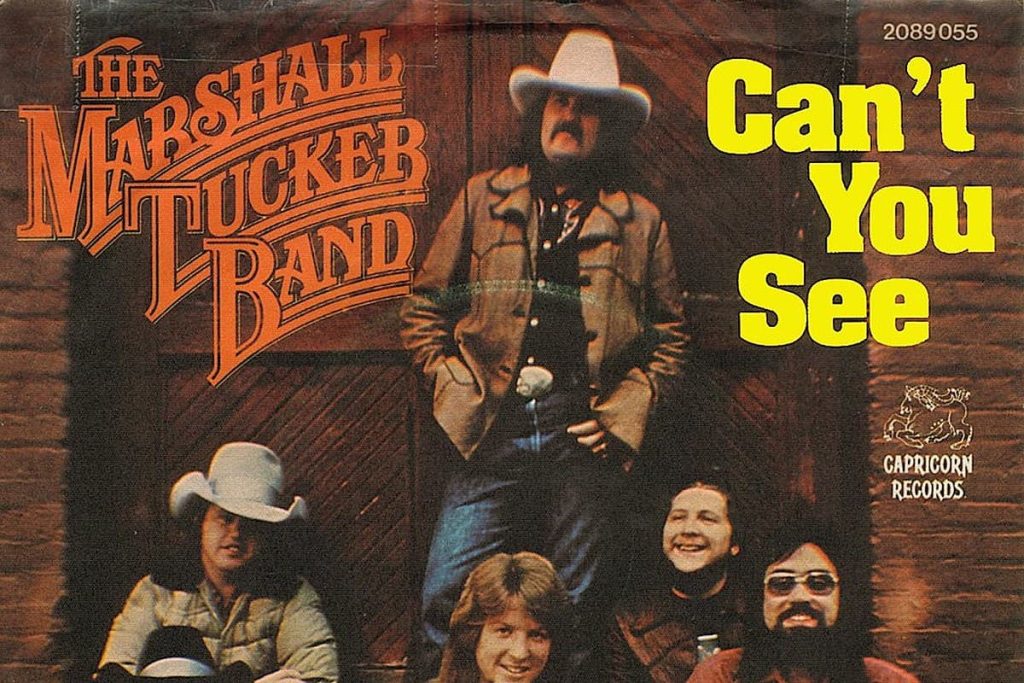
The Marshall Tucker Band’s Can’t You See: A Southern Rock Anthem of Heartache
“Can’t You See” by The Marshall Tucker Band, released in 1973, stands as one of the defining tracks of the Southern rock genre. This song, written by the band’s lead guitarist Toy Caldwell, captures a blend of rock, blues, and country influences, bringing a deep sense of emotional authenticity and raw energy that connects with listeners on a visceral level. With its iconic flute intro, heartfelt lyrics, and gritty Southern rock style, “Can’t You See” became a timeless anthem of love, loss, and longing.
The song tells the story of a man who is heartbroken and overwhelmed by the pain of a failed relationship. He’s ready to leave everything behind to escape his emotional turmoil. The repetition of the refrain “Can’t you see, oh, can’t you see / What that woman, Lord, she’s been doin’ to me” emphasizes his desperation and sorrow, as if he’s pleading for someone to recognize the depth of his hurt. This simple yet poignant line resonates deeply, making the song both a personal confession and a universal expression of heartbreak.
Musically, “Can’t You See” opens with an unexpected instrument for Southern rock—a flute. The flute, played by Jerry Eubanks, sets a haunting, almost melancholic tone that immediately draws the listener in. It’s a surprising yet brilliant touch that gives the song a distinctive edge. As the song progresses, the band layers in more traditional rock elements—bluesy guitar riffs, driving drums, and Toy Caldwell’s raspy, soulful vocals. The combination of these elements creates a sound that feels both intimate and expansive, capturing the essence of Southern rock with its blend of rock and country influences.
Caldwell’s guitar work in the song is another standout feature. His acoustic strumming during the verses sets a steady, contemplative rhythm, while his electric solos soar with emotional intensity. The guitar’s raw, bluesy sound mirrors the narrator’s emotional state, with Caldwell’s playing moving from restrained to full-on wailing as the song progresses. The instrumental breaks, particularly the extended outro, allow the music to speak for itself, giving listeners a chance to feel the weight of the narrator’s pain without words.
Lyrically, the song’s simplicity is one of its strengths. The story of a man trying to escape his heartbreak is one that many listeners can relate to, and the repetition of the central refrain gives the song a hypnotic, almost cathartic quality. The imagery of hopping a train and leaving everything behind speaks to a common theme in Southern rock: the desire for freedom and escape. “Gonna take a freight train / Down at the station, Lord / I don’t care where it goes” encapsulates the narrator’s desperation to leave his troubles behind, even if he doesn’t know where he’s going.
The power of “Can’t You See” also lies in its emotional authenticity. Toy Caldwell’s gravelly voice perfectly conveys the anguish of the song’s narrator, making every line feel real and lived-in. His vocal delivery is raw and unpolished, which only adds to the song’s emotional weight. You can hear the pain in his voice as he sings about the toll the relationship has taken on him, making the listener feel his struggle.
Over the years, “Can’t You See” has become one of the most enduring songs from the Southern rock era, and it’s easy to see why. The Marshall Tucker Band masterfully combines country and blues influences with a rock edge, creating a sound that is both distinctly Southern and universally relatable. The song’s exploration of heartache and longing transcends genres and generations, resonating with anyone who has ever experienced loss or the need to escape from emotional pain.
In terms of its place in music history, “Can’t You See” helped cement The Marshall Tucker Band’s reputation as one of the pioneering groups of Southern rock. Alongside other bands like The Allman Brothers Band and Lynyrd Skynyrd, The Marshall Tucker Band played a crucial role in shaping the sound of the genre, blending the blues, rock, and country traditions of the South into a new, powerful musical form. “Can’t You See” remains one of the most celebrated examples of Southern rock at its best—raw, honest, and deeply connected to the emotional and cultural landscape of the American South.
In conclusion, “Can’t You See” is a timeless Southern rock anthem that continues to captivate listeners with its heartfelt lyrics, stirring guitar work, and unique instrumental flourishes. Its exploration of heartbreak, longing, and the desire for escape strikes a chord that resonates as deeply today as it did in 1973. The Marshall Tucker Band’s ability to fuse rock, blues, and country into such a powerful song has made “Can’t You See” a classic, and it remains a go-to track for anyone seeking to immerse themselves in the raw emotion and spirit of Southern rock.